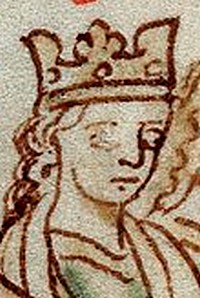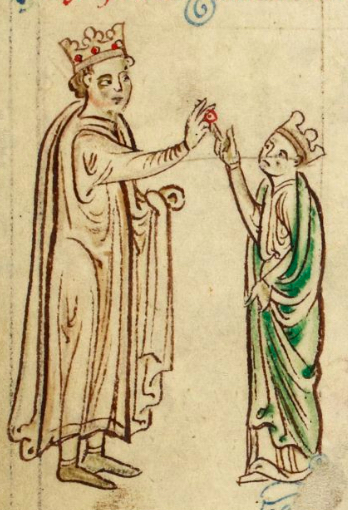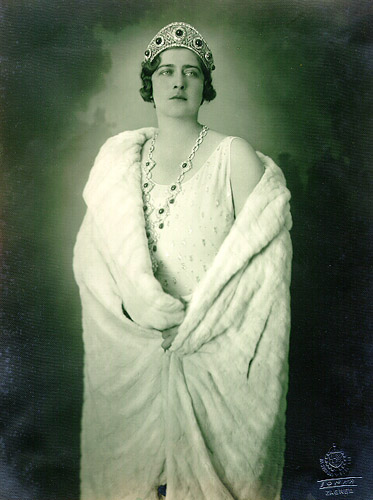by Scott Mehl © Unofficial Royalty 2014
Philippe, King of the Belgians was born Philippe Léopold Louis Marie on April 15, 1960, at the Château du Belvédère in Laeken, Brussels, Belgium He is the eldest son of the then Prince Albert, Prince of Liège, and Paola Ruffo di Calabria. His father was the younger brother, and heir-presumptive, to the reigning King Baudouin.
Philippe has two younger siblings:
- Princess Astrid of Belgium (born 1962) married Archduke Lorenz of Austria-Este, had five children
- Prince Laurent of Belgium (born 1963), married Claire Coombs, had three children
Philippe has a half-sister from his father’s affair with Baroness Sybille de Selys Longchamps. After years of legal battles, on October 1, 2020, the Belgian Court of Appeal ruled that Delphine and her children are entitled to the style and title of HRH Prince/Princess of Belgium, and can use the former King’s surname of Saxe-Coburg.
- Princess Delphine of Belgium (born 1968), married James O’Hare, an American, had two children, now styled Princess Joséphine of Belgium and Prince Oscar of Belgium
Philippe was baptized a month later, on May 17, 1960, at the Church of Saint-Jacques-sur-Coudenberg in Brussels, Belgium. His godfather was his paternal grandfather King Leopold III, and his godmother was his maternal grandmother Luisa Ruffo di Calabria. He was named after his great-grandfather, Philippe, Count of Flanders, the brother of King Leopold II.
Prince Philippe attended primary and secondary school first at St Michael’s College in Brussels, studying in French, and then the Saint-André de Bruges Abbey in Bruges, studying in Dutch. In 1981, he enrolled at the Royal Military Academy in Brussels, graduating in 1981. After qualifying as a fighter pilot, he received his wings from his uncle, King Baudouin in July 1982. He then joined the very elite Paracommando Regiment of the Belgian Army (now called the Immediate Reaction Cell), qualifying as a paratrooper and assuming command of a paratrooper and commando platoon. He continued his military education with a series of courses at the Royal Higher Defense Institute.
Following his military education, the Prince attended Trinity College at the University of Oxford and the Graduate School at Stanford University in the United States, earning his Masters Degree in Political Science in 1985.
On July 31, 1993, his uncle King Baudouin died suddenly at his vacation home in Spain and was succeeded by Philippe’s father, King Albert II. Philippe was now heir-apparent to the Belgian throne and was created Duke of Brabant, the title traditionally given to the eldest child and heir of the Belgian monarch. He was also named Honorary Chairman of the Belgian Foreign Trade Board (now the Foreign Trade Agency) by the Belgian government, taking over the role his father had held for over 30 years. In this role, the Prince has represented Belgium at over 70 economic missions around the world. Following his accession to the throne, this role was taken over by his sister, Princess Astrid.

photo: Order of Sartorial Splendor
On December 4, 1999, Philippe married Mathilde d’Udekem d’Acoz in Brussels, Belgium. A civil ceremony took place at the Brussels Town Hall, followed by a religious ceremony at the Cathedral of Saint Michael and Saint Gudula in Brussels. The couple took up residence at the Royal Palace of Laeken in Laeken, Brussels, Belgium
The couple had two daughters and two sons:
- Princess Elisabeth of Belgium, Duchess of Brabant (born 2001)
- Prince Gabriel of Belgium (born 2003)
- Prince Emmanuel of Belgium (born 2005)
- Princess Eléonore of Belgium (born 2008)
Philippe ascended to the Belgian throne on July 21, 2013, upon the abdication of his father King Albert II. His eldest child Princess Elisabeth, Duchess of Brabant will become the first female monarch of Belgian due to changes in the succession law in 1991.

Princess Delphine and Philippe, King of the Belgians meet for the first time; Credit – Belgian Monarchy Facebook
On October 9, 2020, King Philippe met his half-sister, Princess Delphine, for the first time at Laeken Castle, the king’s residence. A common message from King Philippe and Princess Delphine was posted on Facebook: “This Friday, October 9th, we met for the first time at Laeken Castle. Our meeting was warm. We had the opportunity to get to know each other during a long and rich exchange that allowed us to talk about each other’s lives and shared interests. This bond will now develop in a family setting.”
This article is the intellectual property of Unofficial Royalty and is NOT TO BE COPIED, EDITED, OR POSTED IN ANY FORM ON ANOTHER WEBSITE under any circumstances. It is permissible to use a link that directs to Unofficial Royalty.
Kingdom of Belgium Resources at Unofficial Royalty






















